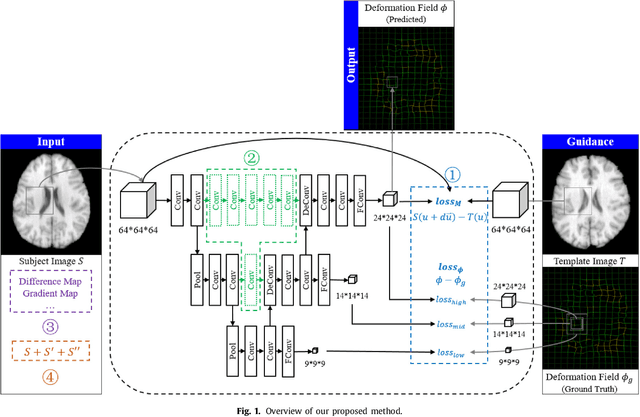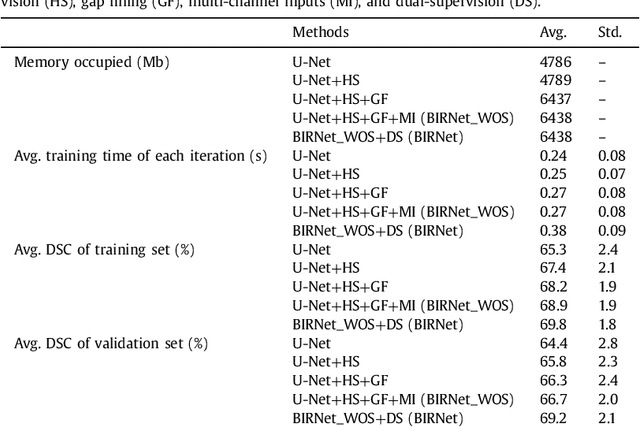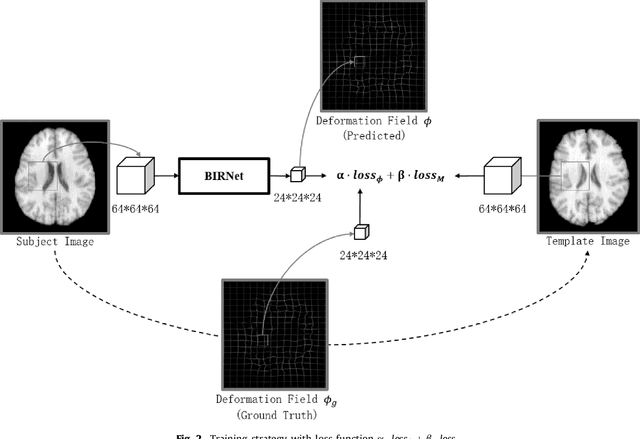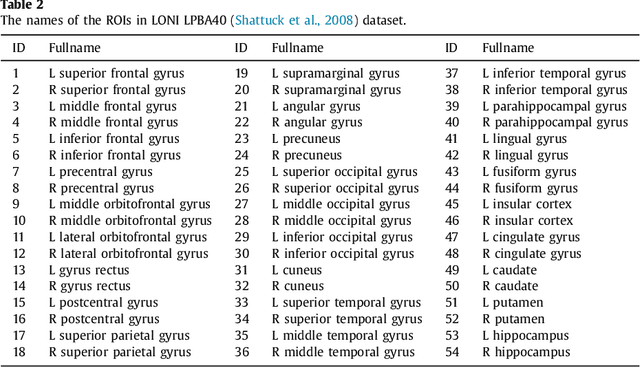Jingfan Fan
MetaFE-DE: Learning Meta Feature Embedding for Depth Estimation from Monocular Endoscopic Images
Feb 05, 2025Abstract:Depth estimation from monocular endoscopic images presents significant challenges due to the complexity of endoscopic surgery, such as irregular shapes of human soft tissues, as well as variations in lighting conditions. Existing methods primarily estimate the depth information from RGB images directly, and often surffer the limited interpretability and accuracy. Given that RGB and depth images are two views of the same endoscopic surgery scene, in this paper, we introduce a novel concept referred as ``meta feature embedding (MetaFE)", in which the physical entities (e.g., tissues and surgical instruments) of endoscopic surgery are represented using the shared features that can be alternatively decoded into RGB or depth image. With this concept, we propose a two-stage self-supervised learning paradigm for the monocular endoscopic depth estimation. In the first stage, we propose a temporal representation learner using diffusion models, which are aligned with the spatial information through the cross normalization to construct the MetaFE. In the second stage, self-supervised monocular depth estimation with the brightness calibration is applied to decode the meta features into the depth image. Extensive evaluation on diverse endoscopic datasets demonstrates that our approach outperforms the state-of-the-art method in depth estimation, achieving superior accuracy and generalization. The source code will be publicly available.
Efficient Non-Exemplar Class-Incremental Learning with Retrospective Feature Synthesis
Nov 03, 2024Abstract:Despite the outstanding performance in many individual tasks, deep neural networks suffer from catastrophic forgetting when learning from continuous data streams in real-world scenarios. Current Non-Exemplar Class-Incremental Learning (NECIL) methods mitigate forgetting by storing a single prototype per class, which serves to inject previous information when sequentially learning new classes. However, these stored prototypes or their augmented variants often fail to simultaneously capture spatial distribution diversity and precision needed for representing old classes. Moreover, as the model acquires new knowledge, these prototypes gradually become outdated, making them less effective. To overcome these limitations, we propose a more efficient NECIL method that replaces prototypes with synthesized retrospective features for old classes. Specifically, we model each old class's feature space using a multivariate Gaussian distribution and generate deep representations by sampling from high-likelihood regions. Additionally, we introduce a similarity-based feature compensation mechanism that integrates generated old class features with similar new class features to synthesize robust retrospective representations. These retrospective features are then incorporated into our incremental learning framework to preserve the decision boundaries of previous classes while learning new ones. Extensive experiments on CIFAR-100, TinyImageNet, and ImageNet-Subset demonstrate that our method significantly improves the efficiency of non-exemplar class-incremental learning and achieves state-of-the-art performance.
Double-Shot 3D Shape Measurement with a Dual-Branch Network
Jul 19, 2024



Abstract:The structured light (SL)-based 3D measurement techniques with deep learning have been widely studied, among which speckle projection profilometry (SPP) and fringe projection profilometry (FPP) are two popular methods. However, they generally use a single projection pattern for reconstruction, resulting in fringe order ambiguity or poor reconstruction accuracy. To alleviate these problems, we propose a parallel dual-branch Convolutional Neural Network (CNN)-Transformer network (PDCNet), to take advantage of convolutional operations and self-attention mechanisms for processing different SL modalities. Within PDCNet, a Transformer branch is used to capture global perception in the fringe images, while a CNN branch is designed to collect local details in the speckle images. To fully integrate complementary features, we design a double-stream attention aggregation module (DAAM) that consist of a parallel attention subnetwork for aggregating multi-scale spatial structure information. This module can dynamically retain local and global representations to the maximum extent. Moreover, an adaptive mixture density head with bimodal Gaussian distribution is proposed for learning a representation that is precise near discontinuities. Compared to the standard disparity regression strategy, this adaptive mixture head can effectively improves performance at object boundaries. Extensive experiments demonstrate that our method can reduce fringe order ambiguity while producing high-accuracy results on a self-made dataset. We also show that the proposed architecture reveals the potential in infrared-visible image fusion task.
High-Resolution Boundary Detection for Medical Image Segmentation with Piece-Wise Two-Sample T-Test Augmented Loss
Nov 04, 2022



Abstract:Deep learning methods have contributed substantially to the rapid advancement of medical image segmentation, the quality of which relies on the suitable design of loss functions. Popular loss functions, including the cross-entropy and dice losses, often fall short of boundary detection, thereby limiting high-resolution downstream applications such as automated diagnoses and procedures. We developed a novel loss function that is tailored to reflect the boundary information to enhance the boundary detection. As the contrast between segmentation and background regions along the classification boundary naturally induces heterogeneity over the pixels, we propose the piece-wise two-sample t-test augmented (PTA) loss that is infused with the statistical test for such heterogeneity. We demonstrate the improved boundary detection power of the PTA loss compared to benchmark losses without a t-test component.
BIRNet: Brain Image Registration Using Dual-Supervised Fully Convolutional Networks
Feb 13, 2018



Abstract:In this paper, we propose a deep learning approach for image registration by predicting deformation from image appearance. Since obtaining ground-truth deformation fields for training can be challenging, we design a fully convolutional network that is subject to dual-guidance: (1) Coarse guidance using deformation fields obtained by an existing registration method; and (2) Fine guidance using image similarity. The latter guidance helps avoid overly relying on the supervision from the training deformation fields, which could be inaccurate. For effective training, we further improve the deep convolutional network with gap filling, hierarchical loss, and multi-source strategies. Experiments on a variety of datasets show promising registration accuracy and efficiency compared with state-of-the-art methods.
 Add to Chrome
Add to Chrome Add to Firefox
Add to Firefox Add to Edge
Add to Edge